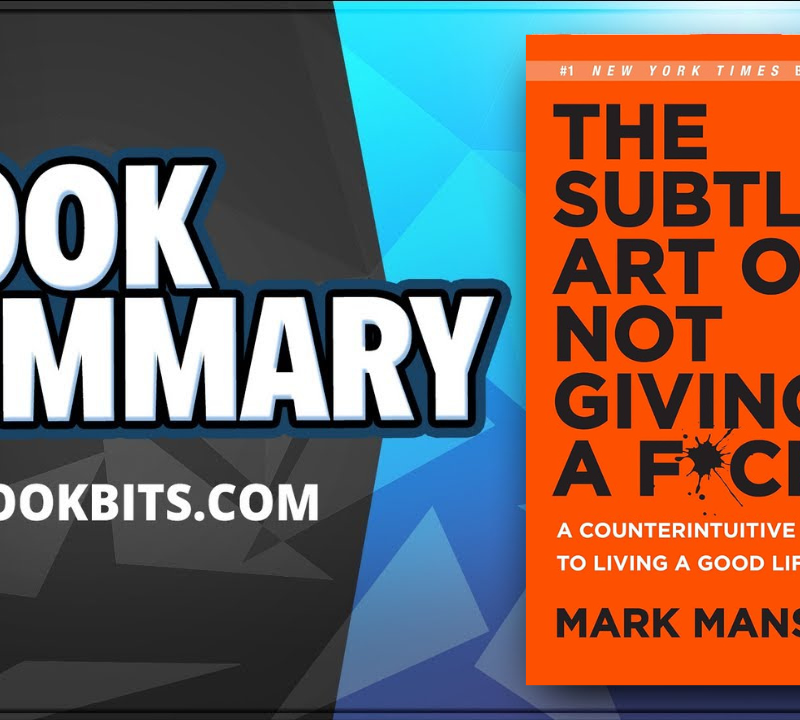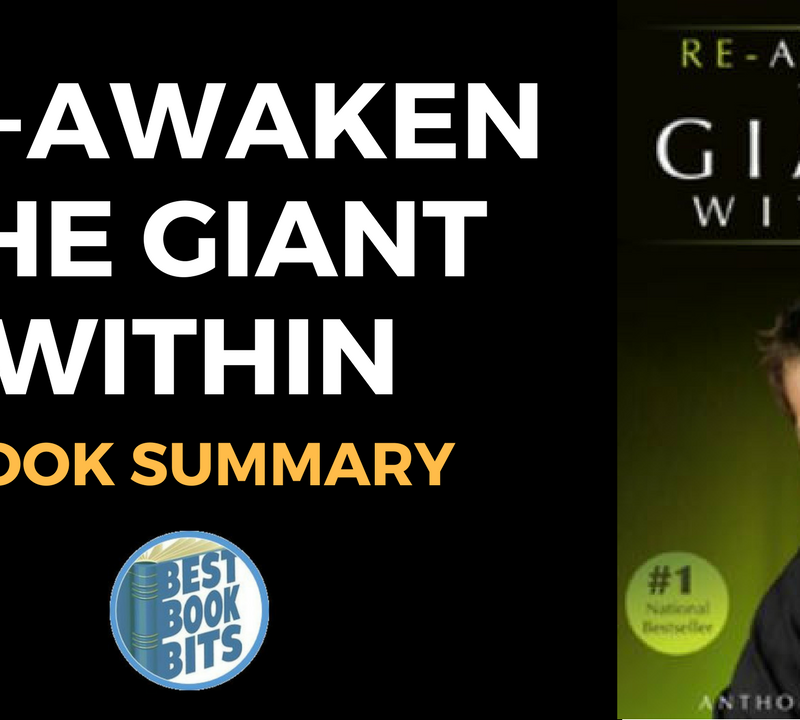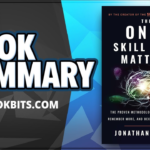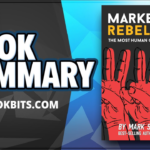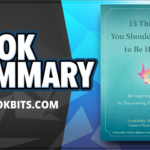★DOWNLOAD THIS FREE PDF SUMMARY HERE https://go.bestbookbits.com/freepdf
? MY FREE BOOK TO LIVING YOUR DREAM LIFE” https://go.bestbookbits.com/first-seven-steps
? SPONSOR BESTBOOKBITS BY USING PATREON https://www.patreon.com/bestbookbits
? SUPPORT BESTBOOKBITS BY CLICKING THE LINKS BELOW
-
- 150 PDF Summaries: https://go.bestbookbits.com/150
- Coaching Program: https://go.bestbookbits.com/coaching
- Subscribe to My Channel: https://www.youtube.com/bestbookbits?sub_confirmation=1
- Website: https://bestbookbits.com
- Instagram: https://www.instagram.com/bestbookbits
- Spotify: https://open.spotify.com/show/0q8OW3dNrLISzyRSEovTBy
- Facebook: https://www.facebook.com/michaelbestbookbits
- Book Club: https://bestbookbits.com/bookclub/
- Mailing List: https://mailchi.mp/d1dfc1907cdb/bestbookbits
PART ONE BOLD TECHNOLOGY
CHAPTER ONE Good-bye, Linear Thinking . . . Hello, Exponential
The Six Ds
- The 6 Ds of Exponentials: Digitalization, Deception, Disruption, Demonetization, Dematerialization, and Democratization
- Anything that becomes digitized (biology, medicine, manufacturing, and so forth) hops on Moore’s law of increasing computational power.
- Once a process or product transitions from physical to digital, it becomes exponentially empowered.
Deception.
- What follows digitalization is deception, a period during which exponential growth goes mostly unnoticed.
- This happens because the doubling of small numbers often produces results so minuscule they are often mistaken for the plodder’s progress of linear growth.
- Imagine Kodak’s first digital camera with 0.01 megapixels doubling to 0.02, 0.02 to 0.04, 0.04 to 0.08. To the casual observer, these numbers all look like zero.
- Yet big change is on the horizon.
- Once these doublings break the whole-number barrier (become 1, 2, 4, 8, etc.), they are only twenty doublings away from a millionfold improvement, and only thirty doublings away from a billionfold improvement.
- It is at this stage that exponential growth, initially deceptive, starts becoming visibly disruptive.
Disruption.
- We live in an exponential era.
- This kind of disruption is a constant.
- For anyone running a business—and this goes for both start-ups and legacy companies—the options are few: Either disrupt yourself or be disrupted by someone else.
Demonetization.
- This means the removal of money from the equation.
- Consider Kodak. Their legacy business evaporated when people stopped buying film.
- Who needs film when there are megapixels?
- Suddenly one of Kodak’s once-unassailable revenue streams came free of charge with any digital camera.
Dematerialization.
- While demonetization describes the vanishing of the money once paid for goods and services, dematerialization is about the vanishing of the goods and services themselves.
- In Kodak’s case, their woes didn’t end with the vanishing of film.
- Following the invention of the digital camera came the invention of the smartphone—which soon came standard with a high-quality, multi-megapixel camera.
- Poof! Now you see it; now you don’t.
- Once those smartphones hit the market, the digital camera itself dematerialized.
- Not only did it come free with most phones, consumers expected it to come free with most phones.
Democratization.
- Democratization is what happens when those hard costs drop so low they becomes available and affordable to just about everyone.
CHAPTER TWO Exponential Technology The Democratization of the Power to Change the World
The Hype Curve and the User Interface
- After a novel technology is introduced and begins gaining momentum, we tend to envision it in its final form—seriously overinflating our expectations for both its developmental timetable and its short-term potential.
- Invariably, when these technologies fail to live up to the initial hype—usually in that gap between deception and disruption on our list of the Six Ds—public sentiment for the technology falls into the trough of disillusionment.
- But when technologies are in the trough, we are again swayed by the hype (this time, the negative hype) and consistently fail to believe they’ll ever emerge, thus missing their massively transformative potential.
- Take the personal computer. The machines actually arrived, and all most people could do was play Pong. This was the trough of disillusionment.
- Recognizing when a technology is exiting the trough of disillusionment and beginning to rise up the slope of enlightenment is critical for entrepreneurs.
- Marc Andreessen, a twenty-two-year-old undergraduate student at the University of Illinois, Urbana-Champaign, coauthored Mosaic—both the very first web browser and the Internet’s first user-friendly user interface.
- As a result, a worldwide grand total of twenty-six websites in early 1993 mushroomed into more than 10,000 sites by August 1995, then exploded into several million by the end of 1998.
- The creation of a simple and elegant user interface gives entrepreneurs the ability to harness this new tool to solve problems, start businesses, and most importantly, experiment.
Made in Space
- Made in Space’s next iteration is an advanced materials and multiple materials 3-D printer—which means that some time in the next five years 60 percent of the parts in use on the ISS will be printable.
- “Imagine being able to colonize a distant planet by bringing nothing but a 3-D printer and some mining equipment,
A Toy Story
- To be competitive, dolls need to be made in bulk, using an injection mold process that requires one mold for each doll part.
- Given that each mold can cost tens of thousands of dollars to create, the start-up costs for a single doll can run you hundreds of thousands of dollars.
- But maybe not.
- These days, MakieLabs is entirely powered by 3-D printers. “In our offices we have three small MakerBot printers for prototyping,
- We’re moving to a world of one-stop manufacturing.
- We’ll either have these tools in our homes and offices or we’ll rent them via the cloud.
- We’re at the front end of a very creative time—a great time for disruptive entrepreneurs.
CHAPTER THREE Five to Change the World
In this chapter, we’ll overview five more technologies also ripe for entrepreneurial exploitation: networks and sensors, infinite computing, artificial intelligence, robotics, and synthetic biology.
Networks and Sensors
- There are over seven billion smartphones and tablets in existence.
- transforming a world that was once passive and dumb into one that is active and smart.
- Sensors in our cars, in our parking lots, in jet engines
Trillion Sensor Visions
- This uber-network will generate $19 Trillion in value.
- Think about this for a moment.
- The U.S. economy hovers around $15 trillion a year.
- Cisco is saying that over the ten-year period, this new net will have an economic impact greater than America’s GDP.
- Talk about the land of opportunity
Infinite Computing: The Beauty of Brute Force
- Infinite computing is the term Bass users to describe the ongoing progression of computing from a scarce and expensive resource toward one that is plentiful and free
- “The cloud is democratizing our ability to leverage computing on a massive scale”
- Until recently, mistakes were too costly for entrepreneurs to make with wanton abandon. Infinite computing demonetizes error making, thus democratizing experimentation.
- No longer do we have to immediately dismiss outlandish ideas for the waste of time and resources they invariably incur. Today we can try them all
Artificial Intelligence (AI): Expertise on Demand
- “we will give an AI permission to listen to every phone conversation you have. Permission to read your emails and blogs, eavesdrop on your meetings, review your genome scan, watch what you eat and how much you exercise, even tap into your Google Glass feed. And by doing all this, your personal AI will be able to provide you with information even before you know you need it”
- Imagine, for example, a system that recognises the faces of people in your visual field and provides you with their names
Robotics: Our New Workforce
- Robots don’t unionize, don’t show up late, don’t take lunch, don’t go home, and can work an assembly line for the equivalent of $4 an hour
- Besides replacing our blue-collar workforce, over the next three to five years, robots will invade a much wider assortment of fields. “Already,” says Dan Barry, “we’re seeing telepresence robots transport our eyes, ears, arms, and legs to conferences and meetings. Autonomous cars, which are, after all, just robots, will [start to] chauffeur people around and deliver goods and services. Over the next decade, robots will also move into health care, replacing doctors for routine surgeries and supplementing nurses for eldercare.
- “If I were an exponential entrepreneur looking to create tremendous value, I’d look for those jobs that are least enjoyable for humans to do. . . . Given that the global market for unskilled labor is worth many trillions of dollars, I would say this is a huge opportunity.”
★DOWNLOAD THIS FREE PDF SUMMARY HERE https://go.bestbookbits.com/freepdf
? MY FREE BOOK TO LIVING YOUR DREAM LIFE” https://go.bestbookbits.com/first-seven-steps
? SPONSOR BESTBOOKBITS BY USING PATREON https://www.patreon.com/bestbookbits
? SUPPORT BESTBOOKBITS BY CLICKING THE LINKS BELOW
-
- 150 PDF Summaries: https://go.bestbookbits.com/150
- Coaching Program: https://go.bestbookbits.com/coaching
- Subscribe to My Channel: https://www.youtube.com/bestbookbits?sub_confirmation=1
- Website: https://bestbookbits.com
- Instagram: https://www.instagram.com/bestbookbits
- Spotify: https://open.spotify.com/show/0q8OW3dNrLISzyRSEovTBy
- Facebook: https://www.facebook.com/michaelbestbookbits
- Book Club: https://bestbookbits.com/bookclub/
- Mailing List: https://mailchi.mp/d1dfc1907cdb/bestbookbits
PART TWO BOLD MINDSET
CHAPTER FOUR Climbing Mount Bold
Motivation 2.0
- Once we pay people enough so that meeting basic needs is no longer a constant cause for concern, extrinsic rewards lose their effectiveness, while intrinsic rewards—meaning internal, emotional satisfactions—become far more critical.
- Three in particular stand out: autonomy, mastery, and purpose.
- Autonomyis the desire to steer our own ship.
- Masteryis the desire to steer it well.
- And purposeis the need for the journey to mean something.
Google’s Eight Innovation Principles
- Focus on the User.
- We’ll see this again in chapter 6, when Larry Page and Richard Branson speak about the importance of building customer-centric businesses.
- Share Everything.
- In a hyperconnected world with massive amounts of cognitive surplus, it’s critical to be open, allow the crowd to help you innovate, and build on each other’s ideas.
- Look for Ideas Everywhere.
- The entire third part of this book is dedicated to the principle that crowdsourcing can provide you with incredible ideas, insights, products, and services.
- Think Big but Start Small.
- This is the basis for Singularity University’s 109 thinking. You can start a company on day one that affects a small group, but aim to positively impact a billion people within a decade.
- Never Fail to Fail.
- The importance of rapid iteration: Fail frequently, fail fast, and fail forward.
- Spark with Imagination, Fuel with Data.
- Agility—that is, nimbleness—is a key discriminator against the large and linear.
- And agility requires lots of access to new and often wild ideas and lots of good data to separate the worthwhile from the wooly.
- For certain, the most successful start-ups today are data driven.
- They measure everything and use machine learning and algorithms to help them analyze that data to make decisions.
- Be a Platform.
- Look at the most successful companies getting billion-dollar valuations . . . AirBnb, Uber, Instagram . . . they are all platform plays.
- Is yours?
- Have a Mission That Matters.
- Perhaps most important, is the company you’re starting built upon a massively transformative purpose?
- When the going gets hard, will you push on or give up?
- Passion is fundamental to forward progress.
Flow
- Technically, flow is defined as an optimal state of consciousness where we feel our best and perform our best.
CHAPTER FIVE The Secrets of Going Big
Peter’s Laws™ The Creed of the Persistent and Passionate Mind
- If anything can go wrong, fix it! (To hell with Murphy!)
- When given a choice—take both!
- Multiple projects lead to multiple successes.
- Start at the top, then work your way up.
- Do it by the book . . . but be the author!
- When forced to compromise, ask for more.
- If you can’t win, change the rules.
- If you can’t change the rules, then ignore them.
- Perfection is not optional.
- When faced without a challenge—make one.
- No simply means begin one level higher.
- Don’t walk when you can run.
- When in doubt: THINK!
- Patience is a virtue, but persistence to the point of success is a blessing.
- The squeaky wheel gets replaced.
- The faster you move, the slower time passes, the longer you live.
- The best way to predict the future is to create it yourself!
- The ratio of something to nothing is infinite.
- You get what you incentivize.
- If you think it is impossible, then it is for you.
- An expert is someone who can tell you exactly how something can’t be done.
- The day before something is a breakthrough, it’s a crazy idea.
- If it was easy, it would have been done already.
- Without a target you’ll miss it every time.
- Fail early, fail often, fail forward!
- If you can’t measure it, you can’t improve it.
- The world’s most precious resource is the persistent and passionate human mind.
- Bureaucracy is an obstacle to be conquered with persistence, confidence, and a bulldozer when necessary.
CHAPTER SIX Billionaire Wisdom Thinking at Scale
Four Who Changed the World
- A quartet of entrepreneurs who have already harnessed exponential technology to build multibillion-dollar companies that forever changed the world: Elon Musk, Richard Branson, Jeff Bezos, and Larry Page.
Characteristics these entrepreneurs have:
- Risk taking and risk mitigation
- Rapid iteration and ceaseless experimentation
- Passion and purpose
- Long-term thinking
- Customer-centric thinking
- Probabilistic thinking
- Rationally optimistic thinking
- Reliance on first principles, aka fundamental truths
Elon Musk and Life on Mars
- Musk, like every entrepreneur in this chapter, is driven by passion and purpose.
- Why? Passion and purpose scale—always have, always will.
PART THREE THE BOLD CROWD
CHAPTER SEVEN Crowdsourcing Marketplace of the Rising Billion
Case Study 1: Freelancer—Quantum Mechanic for Hire by the Hour
- com has become the largest freelancer marketplace on the planet.
- Over 5.4 million jobs have been posted, representing a total value of $1.39 billion in work.
Case Study 2: Tongal—Genius TV Commercials at One One-Hundredth the Price
- Tongal process: If a brand wants to crowdsource a commercial, the first step is to put up a purse—anywhere from $50,000 to $200,000.
- Then, Tongal breaks the project into three phases: ideation, production, and distribution, allowing creatives with different specialties (writing, directing, animating, acting, social media promotion, and so on) to focus on what they do best.
- In the first competition—the ideation phase—a client creates a brief describing its objective.
- Tongal members read the brief and submit their best ideas in 500 characters (about three tweets).
- Customers then pick a small number of ideas they like and pay a small portion of the purse to these winners.
Case Study 3: reCAPTCHA and Duolingo—Dual-Use Crowdsourcing
- “All told,” says Ahn, “about 200 million CAPTCHA squiggles are typed in a day.
- Each time you type one of those you waste about ten seconds.
- If you multiply that by 200 million, that means humanity as a whole is wasting around 500,000 hours every day filling out these annoying CAPTCHAs.
- This was the birth of reCAPTCHA, a website that serves a dual purpose, both helping to distinguish bots from humans while simultaneously helping to digitize books.
CHAPTER EIGHT Crowdfunding No Bucks, No Buck Rogers
Emergence of Crowdfunding
- By 2015, experts predict a $15 billion crowdfunding market, which with the passing of the JOBS Act and the addition of equity crowdfunding to the scene could become an incredible $300 billion marketplace over the coming years.
The Types of Crowdfunding
Four main types of crowdfunding, each based on what the investor receives in return for helping to fund a campaign: donation, debt, equity, and reward.
-
- This is simply the digital version of traditional charity.
- Donors get little beyond gratitude and a receipt to claim on their taxes.
- Examples include DonorsChoose, GlobalGiving, and Causes.
-
- Sometimes referred to as microlending or peer-to-peer (P2P) lending, this variety of crowdfunding involves an entrepreneur asking the crowd for a loan, and, in return, repaying that loan with interest.
- Examples include Kiva and LendingClub.
-
- This is the newest type of crowdfunding, a development made possible by recent changes to the US Securities and Exchange Commission (SEC) regulations.
- In equity crowdfunding, entrepreneurs can now sell equity in their company online, asking investors for cash in return for stock.
- Examples include Crowdfunder, Startup Crowdfunding, and (for those who have already raised their first $100,000 in capital) AngelList.
- Reward or Incentive.
- The funder sends money to support the creation of a product or service that inspires him or her and in return receives a reward. Simple as that.
- Send $25 and get a T-shirt. Send $100 and get a copy of the product you’re helping to fund (technically, a presale).
- The numbers vary a bit, but in general, reward-based crowdfunding is 60 percent more effective than straight-ahead donor funding.
- Examples include Indiegogo, Kickstarter, and RocketHub.
CHAPTER NINE BUILDING COMMUNITIES Reputation Economics
“The trillions of hours of free time the population of the planet has to spend doing the things they care about” is how NYU professor Clay Shirky defines the term cognitive surplus.
Case Study 1: Galaxy Zoo—A DIY Community
- Ten hours a day for five days straight is what it took him to sort through 50,000 images,
- Within twenty-four hours, they were classifying nearly 70,000 galaxies an hour.
Case Study 2: Local Motors—A DIY Community
- …the world’s first open-sourced car company to reach production.
- Able to design and build cars five times faster and with a hundred times less capital than traditional manufacturing companies,
- If your community can provide a legitimate release valve for people’s incredibly frustrated passion, you are unleashing one of the most potent forces in the history of the world.
Case Study 3: TopCoder—An Exponential Community
- …we turned coding into a massive multiplayer game. We would post a problem statement, and as soon as a coder opened it, a clock would start ticking down.
- People got points for how quickly they submitted a solution and how accurate their code was.
- But how high your rating was, that was a badge of honor.
- People weren’t competing for the money, they wanted the rating.
CHAPTER TEN Incentive Competitions Getting the Best and Brightest to Help Solve Your Challenges
Case Study 1: Wendy Schmidt Oil Cleanup XCHALLENGE
- Using a combination of traditional methods, cleanup teams managed to remove less than half the oil, approximately 69 million gallons.
- Natural dispersal and evaporation removed an additional 84 million gallons.
- But that left a whopping 53 million gallons, about 26 percent of the spill, to pollute the ocean and adjacent shoreline.
- The finalists were an eclectic group.
- Six teams were comprised of oil industry veterans with established or developing cleanup technologies, while the remaining four were start-ups with little or no oil background whatsoever.
- The results were dazzling.
- Seven teams doubled the industry’s previous best ORE. One of the teams, Elastec/American Marine, won first prize by achieving an ORE of 89.5 percent and an ORR of 4,670 gallons per minute, or a 400 percent improvement over the industry’s all-time best.
- The lesson here is that in incentive competitions, results can come from the most unusual of places, from players you would never expect, and from technologies you might never suspect.
Case Study 2: The Netflix Prize
- A movie recommendation engine is a bit of software that tells you what movie you might want to watch next based on movies you’ve already watched and rated (on a scale of one to five stars).
- Netflix’s original recommendation engine, Cinematch, was created back in 2000 and quickly proved to be a wild success.
- Within a few years, nearly two-thirds of their rental business was being driven by their recommendation engine.
- Thus the obvious corollary: the better their recommendation engine, the better their business. And that was the problem.
- Netflix announced a million-dollar purse for whoever could write an algorithm that improved their existing system by 10 percent.
- A competitor called ‘simonfunk’ posted a complete description of his algorithm—which at the time was tied for third place—giving everyone else the opportunity to piggyback on his progress. ‘We had no idea the extent to which people would collaborate with each other,
Where Do Prizes Make Sense?
Prizes are not panaceas. Many challenges are too complicated to be prizable and others require teams to raise too much money to compete.
In my experience, prizes make the most sense in the following circumstances:
- You have a clear understanding of your target, but not the method to get there.
- In the case of the Ansari XPRIZE, I knew I wanted a spaceship that could get consumers repeatedly a hundred kilometers into space.
- I didn’t know (or care) what type of propulsion system, landing system, or materials the vehicle would use.
- You have a large enough crowd of innovators to tap into.
- You want innovators from everywhere. Restricting entrance into a competition to smaller talent pools produces lesser results.
- The Wendy Schmidt Oil Cleanup XCHALLENGE attracted 350 teams from around the globe.
- Had we restricted the challenge only to students at a single university, we would never have achieved our desired goals.
- A small team is capable of solving the challenge.
- The ideal competition can be solved by a reasonably small team. In the case of the DARPA Grand Challenge for autonomous cars, it was a team of graduate students from Stanford.
- In the case of the Ansari XPRIZE, it was a group of thirty engineers from Scaled Composites.
- Projects requiring a team much larger will likely run into fund-raising and management challenges.
- You are flexible on timeline, types of solutions, and who might win.
- When using an incentive prize solution, you give up a certain amount of control in exchange for getting unexpected, potentially breakthrough results from nontraditional players. If you specify challenge parameters too narrowly—such as which technologies must be used or where the innovators should come from—you lower your chances of getting the results you seek.
- You are flexible on who owns the intellectual property at the end.
- We’ll discuss intellectual property (IP) in greater length below, but in the case of most XPRIZEs, the IP is retained by the winning team, and the prize sponsor backing the competition is doing so for the purpose of publicity or to bring real change to the world.
- This is not necessarily the case for HeroX challenges, where the IP can be owned at the end by the challenge sponsor.
The Big Three Motivators
- Significance/recognition.
- There’s a lot of latent talent that wants the chance to prove itself to the world.
- Prizes, especially those high in MTP and visibility, offer the winning team the chance for rapid fame.
-
- While many teams don’t compete only for the money, sometimes the cash can be a real motivator.
- Such was the case for Dr. Paul MacCready, who designed and built the Gossamer Condor, a human-powered vehicle that flew a figure eight between two markers half a mile apart.
- MacCready pursued the challenge to win the £50,000 Kremer prize and pay off a personal debt.
-
- In many cases, such as with the Wendy Schmidt Oil Cleanup competition, the competing teams are deeply frustrated by the status quo and want to solve the problem.
- Thus competition gives them a target to shoot toward, and a way to focus their frustration.
★DOWNLOAD THIS FREE PDF SUMMARY HERE https://go.bestbookbits.com/freepdf
? MY FREE BOOK TO LIVING YOUR DREAM LIFE” https://go.bestbookbits.com/first-seven-steps
? SPONSOR BESTBOOKBITS BY USING PATREON https://www.patreon.com/bestbookbits
? SUPPORT BESTBOOKBITS BY CLICKING THE LINKS BELOW
-
- 150 PDF Summaries: https://go.bestbookbits.com/150
- Coaching Program: https://go.bestbookbits.com/coaching
- Subscribe to My Channel: https://www.youtube.com/bestbookbits?sub_confirmation=1
- Website: https://bestbookbits.com
- Instagram: https://www.instagram.com/bestbookbits
- Spotify: https://open.spotify.com/show/0q8OW3dNrLISzyRSEovTBy
- Facebook: https://www.facebook.com/michaelbestbookbits
- Book Club: https://bestbookbits.com/bookclub/
- Mailing List: https://mailchi.mp/d1dfc1907cdb/bestbookbits


